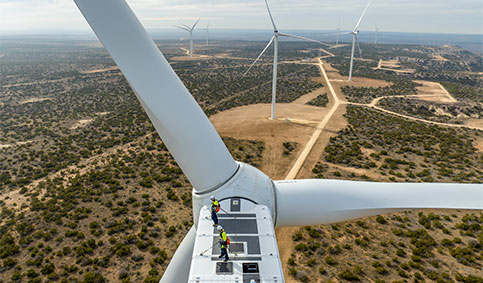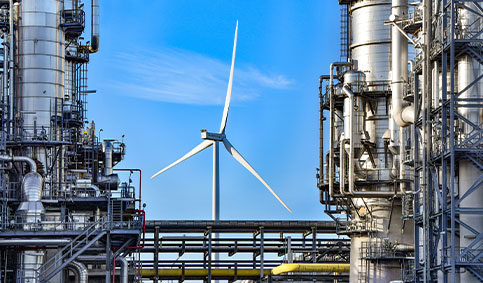Paris alignment
The Paris Agreement aims to strengthen the global response to the threat of climate change by “holding the increase in the global average temperature to well below 2°C above pre-industrial levels and pursuing efforts to limit the temperature increase to 1.5°C above pre-industrial levels”.[1] Shell supports the more ambitious 1.5°C goal of the Paris Agreement.
To limit the temperature increase to 1.5°C, the world would need to reach net zero by around 2050, according to the Intergovernmental Panel on Climate Change (IPCC).[2]
Shell has set a target to achieve net-zero emissions by 2050.[3] We have set targets to reduce the net carbon intensity of the energy products we sell by 9-12% by 2024, 9-13% by 2025, 15-20% by 2030, and 100% by 2050. We believe these targets are aligned with a 1.5°C pathway derived from scenarios developed for the IPCC’s Sixth Assessment Report. In 2023, we met our short-term target to reduce the net carbon intensity of the energy products we sell, with a 6.3% reduction against our target of 6-8% compared with 2016. We provide further information in our Energy Transition Strategy 2024.[4]
We are committed to lobbying for policy positions that we believe are in line with the goals of the Paris Agreement and the world achieving net-zero emissions by 2050. This applies to our direct and indirect lobbying.
Within the industry associations we are members of, we are committed to advocating policy positions that we believe are in line with the goals of the Paris Agreement and the world achieving net-zero emissions by 2050.
Our updated targets and ambitions
[B] Subject to the completion of the sale of Shell Petroleum Development Company of Nigeria Limited (SPDC).
[C] Customer emissions from the use of our oil products (Scope 3, Category 11) were 517 million tonnes carbon dioxide equivalent (CO2e) in 2023 and 569 million tonnes CO2e in 2021.
[1] unfccc.int/sites/default/files/resource/parisagreement_publication.pdf
[2] www.ipcc.ch/2022/04/04/ipcc-ar6-wgiii-pressrelease/
[3] Our target to achieve net-zero emissions by 2050 is across Scopes 1, 2 and 3.
[4] www.shell.com/sustainability/our-climate-target/shell-energy-transition-strategy.html









